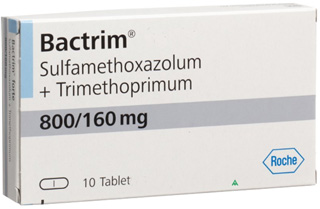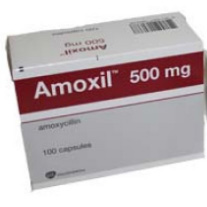General Description of Bactrim
Bactrim is an antibiotic containing sulfamethoxazole and trimethoprim. It is used to treat various bacterial infections. Bactrim interferes with the production of folic acid in bacteria, which is essential for their growth and survival. The combination of these two active ingredients makes Bactrim effective against a range of bacterial species.
Pharmacokinetics and Metabolism
Bactrim is absorbed rapidly when administered orally, with peak plasma concentrations achieved within 1-4 hours. Sulfamethoxazole and trimethoprim are metabolized in the liver. Their metabolites, as well as unaltered drug, are excreted principally by the kidneys. The half-life of sulfamethoxazole is approximately 10 hours, whereas trimethoprim’s half-life is 8-10 hours.
Dosage and Administration Guidelines
Dosage of Bactrim depends on the infection type and severity. Typical adult dosing ranges from 800 mg sulfamethoxazole and 160 mg trimethoprim every 12 hours. For pediatric patients, dosage is calculated based on body weight. Bactrim should be taken with a full glass of water and may be administered with or without food.
Uses and Indications
Bactrim is indicated for urinary tract infections, respiratory infections, and gastrointestinal infections like traveler’s diarrhea. It is also prescribed for specific conditions such as Pneumocystis pneumonia and certain types of Shigella infections. Utilization is contingent upon clinical evaluation and susceptibility patterns of the causative microorganisms.
Contraindications
Bactrim is contraindicated in patients with a known hypersensitivity to sulfamethoxazole, trimethoprim, or other sulfonamides. It should not be used in patients with significant liver damage or severe renal insufficiency. It is also contraindicated in megaloblastic anemia due to folate deficiency. Consideration should be given to potential contraindications before prescribing.
Common Side Effects
Common adverse effects of Bactrim include nausea, vomiting, and loss of appetite. Some patients may experience skin rashes or headache. These side effects are typically mild and resolve after the drug course is completed. Patients should be informed about these potential side effects prior to starting therapy.
Serious Side Effects
Serious adverse events, though rare, can occur with Bactrim use. Stevens-Johnson syndrome, a severe skin reaction, can develop. Blood disorders such as agranulocytosis or thrombocytopenia have been reported. Immediate medical attention is required if signs of these adverse reactions appear. Regular monitoring may be advised in long-term therapy.
Drug Interactions
Interactions can occur with Bactrim and other medications. Concomitant use with anticoagulants may increase bleeding risk. Diuretics may enhance the likelihood of thrombocytopenia. Adjustments may be needed when coadministered with certain antiepileptic or diabetic medications. It is crucial to review concomitant medications before initiating treatment.
Monitoring Requirements
Patients on Bactrim should have their renal function monitored periodically, especially those with preexisting renal conditions. A complete blood count is recommended during prolonged therapy to detect potential hematologic changes. Serum potassium levels should be checked, particularly in patients at risk of hyperkalemia. Monitoring is essential to prevent and manage adverse effects effectively.
Special Population Considerations
Bactrim should be used cautiously in elderly patients as they may have a higher susceptibility to side effects. Dose adjustments may be necessary due to diminished renal function. For pregnant or breastfeeding women, Bactrim is generally avoided unless potential benefits outweigh risks. Individual risk factors should be carefully assessed in these populations.
Storage and Handling Instructions
Bactrim should be stored at room temperature, away from excess heat and moisture. Keep the medication in its original container and tightly closed when not in use. Proper disposal of expired or unused medication should be followed in accordance with local regulations. It should be kept out of reach of children and pets.








Reviews
There are no reviews yet.